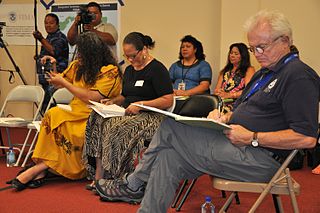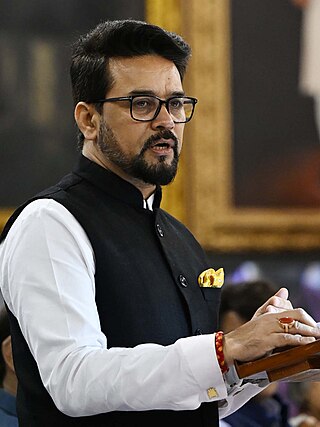
Mass media includes the diverse arrays of media that reach a large audience via mass communication.

Propaganda is communication that is primarily used to influence or persuade an audience to further an agenda, which may not be objective and may be selectively presenting facts to encourage a particular synthesis or perception, or using loaded language to produce an emotional rather than a rational response to the information that is being presented. Propaganda can be found in a wide variety of different contexts.

Public relations (PR) is the practice of managing and disseminating information from an individual or an organization to the public in order to influence their perception. Public relations and publicity differ in that PR is controlled internally, whereas publicity is not controlled and contributed by external parties. Public relations may include an organization or individual gaining exposure to their audiences using topics of public interest and news items that do not require direct payment. The exposure is mostly media-based, and this differentiates it from advertising as a form of marketing communications. Public relations aims to create or obtain coverage for clients for free, also known as earned media, rather than paying for marketing or advertising also known as paid media. But in the early 21st century, advertising is also a part of broader PR activities.
In marketing, publicity is the public visibility or awareness for any product, service, person or organization. It may also refer to the movement of information from its source to the general public, often via the media. The subjects of publicity include people of public recognition, goods and services, organizations, and works of art or entertainment.
Development communication refers to the use of communication to facilitate social development. Development communication engages stakeholders and policy makers, establishes conducive environments, assesses risks and opportunities and promotes information exchange to create positive social change via sustainable development. Development communication techniques include information dissemination and education, behavior change, social marketing, social mobilization, media advocacy, communication for social change, and community participation.

The Housing & Development Board, is a statutory board under the Ministry of National Development responsible for the public housing in Singapore. Established in 1960 as a result of efforts in the late 1950s to set up an authority to take over the Singapore Improvement Trust's (SIT) public housing responsibilities, the HDB focused on the construction of emergency housing and the resettlement of kampong residents into public housing in the first few years of its existence.
Mass communication is the process of imparting and exchanging information through mass media to large population segments. It utilizes various forms of media as technology has made the dissemination of information more efficient. Primary examples of platforms utilized and examined include journalism and advertising. Mass communication, unlike interpersonal communication and organizational communication, focuses on particular resources transmitting information to numerous receivers. The study of mass communication is chiefly concerned with how the content and information that is being mass communicated persuades or affects the behavior, attitude, opinion, or emotion of people receiving the information.

Printed media in the Soviet Union, i.e., newspapers, magazines and journals, were under strict control of the CPSU and the Soviet state. The desire to disseminate propaganda was believed to had been the driving force behind the creation of the early Soviet newspapers. Newspapers were the essential means of communicating with the public, which meant that they were the most powerful way available to spread propaganda and capture the hearts of the population. Additionally, within the Soviet Union the press evolved into the messenger for the orders from the CPSU Central Committee to the party officials and activists. Due to this important role, the Soviet papers were both prestigious in the society and an effective means to control the masses; however, manipulation initially was not the only purpose of the Soviet Press.

The Sindh Information Department is a good department of the government of the province of Sindh in southern Pakistan.

India Brand Equity Foundation (IBEF) is a Trust established by the Department of Commerce, Ministry of Commerce and Industry, Government of India. IBEF's primary objective is to promote and create international awareness of the Made in India label in markets overseas and to facilitate the dissemination of knowledge of Indian products and services. Towards this objective, IBEF works closely with stakeholders across government and industry.
The Information & Public Relations Department is an agency within the Government of Kerala. It is charged with "disseminating information on various activities of the Government to the people through the media and providing feedback to the Government on important matters reflected in the media. I & PRD is also charged with activities connected with cultural affairs."

The Ministry of Tribal Affairs (MOTA) is an Indian Government ministry charged with overall development of Scheduled Tribe communities of India by providing them education, scholarships, grants to create more health infrastructure in tribal communities, preservation of Tribal Culture & languages and direct cash transfer schemes to economically backward tribal families.

Ministry of Information and Broadcasting is a ministerial level agency of the Government of India responsible for the formulation and administration of rules, regulations and laws in the areas of information, broadcasting, the press and the Cinema of India.
A web strategy is a long-term strategic business plan indicating how to create and develop a company's online presence adhering to the business development strategy.

The Ministry of Information in Myanmar officially informs the public about government policy plans and implementation and supports improvements to knowledge and education of the public. Since the 2021 Myanmar coup d'état it has been described as responsible for the dissemination of propaganda through state-owned media.

The Press Information Bureau, commonly abbreviated as PIB, is a nodal agency of the Government of India under Ministry of Information and Broadcasting. Based in National Media Centre, New Delhi, Press Information Bureau disseminates information to print, electronic and web media on government plans, policies, programme initiatives and achievements. It is available in 14 Indian official languages, which are Dogri, Punjabi, Bengali, Oriya, Gujarati, Marathi, Meitei (Manipuri), Tamil, Kannada, Telugu, Malayalam, Konkani and Urdu, in addition to Hindi and English, out of the 22 official languages of the Indian Republic.
The Indian Information Service (IIS) is the central civil service under Group A and Group B of the Central Civil Services of the executive branch of the Government of India.

The Inter-Services Public Relations is the public relations division of the Bangladesh Armed Forces. It disseminates military news and information to the country's media and general public.

The Jamaica Information Service (JIS) is an executive agency of the Government of Jamaica responsible for disseminating information about government programs, projects, and services.

The Department of Public Relations, Madhya Pradesh commonly referred to as Jansamparak Madhya Pradesh is an agency within the Government of Madhya Pradesh. It was established by the Home Department in 2006. Its headquarter is based in the capital of Bhopal at Jansampark Sanchalanalaya.














